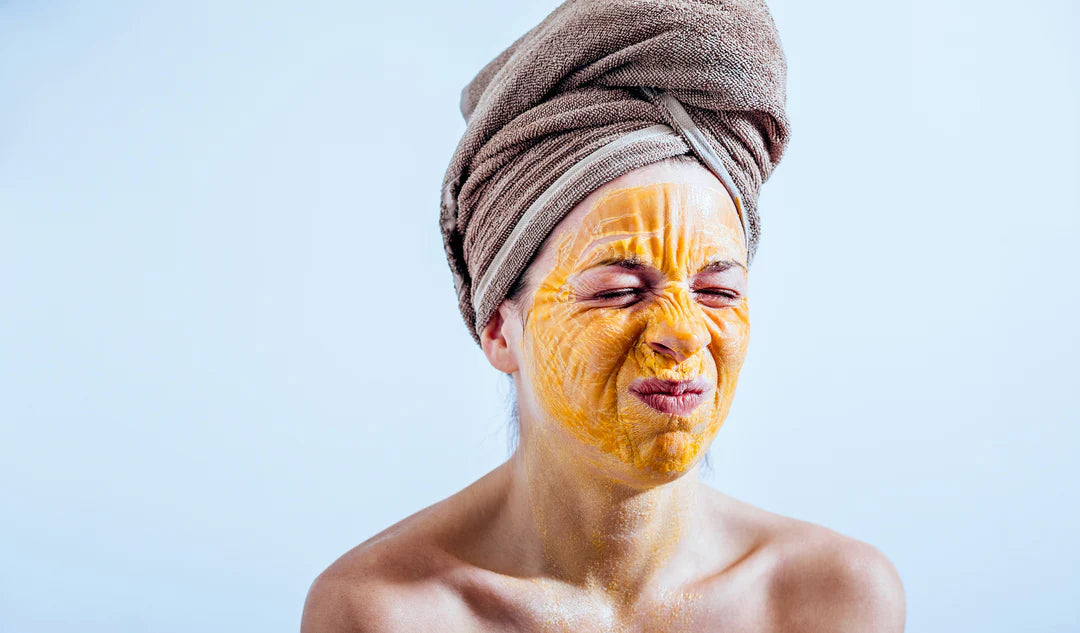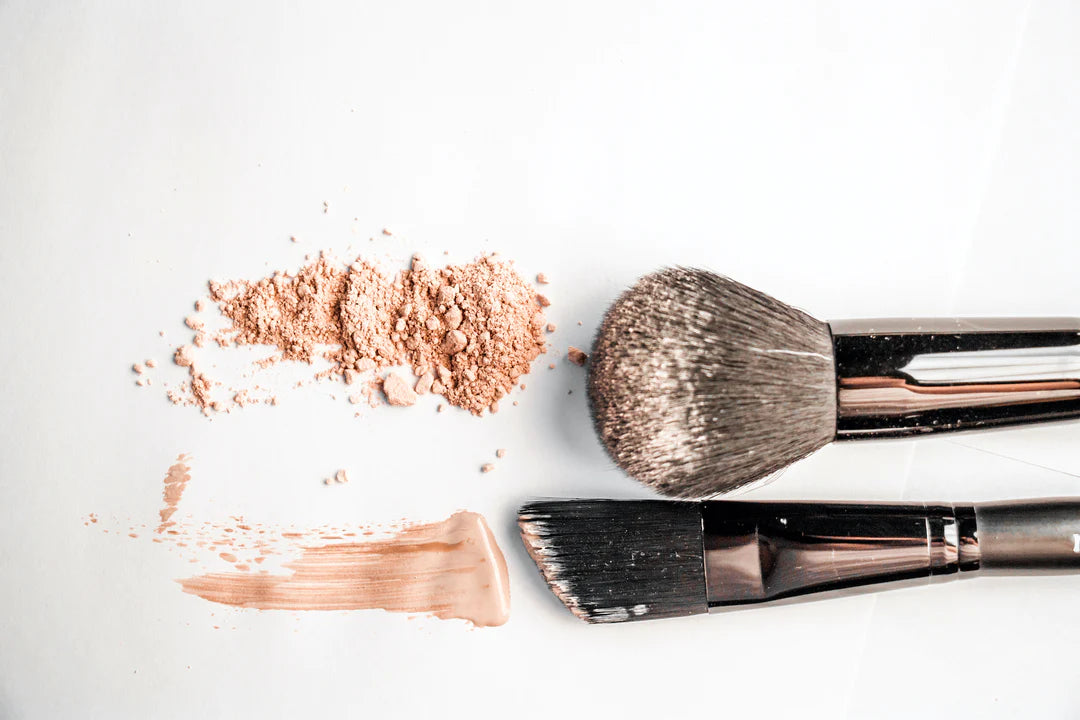
Photoaging: How Sun Damaged Skin Makes You Look Older
Once upon a time, the snobbish social elite found it distasteful and “common” to have suntanned skin. Men of the upper classes always wore long sleeves and pants, while ladies used bonnets, shawls, and parasols to protect their delicate complexions.
But sometime in the 1940s, we collectively decided that tans were in. Cue the baby oil and foil reflectors.
And even though we now know more about the danger of sunlight vis-à-vis cancer, looking tan is still a popular aesthetic. But there’s another, less-discussed danger tied to sun exposure: premature aging.
Maturing is a beautiful and rewarding process, but even the most age-positive among us don’t want to look older than we are — especially when looking older is tied to poor skin health. After all, what would you rather be? Prematurely aging with skin damage, or youthful with a healthy complexion?
It’s no contest. But most people don’t know how to reach this goal, because they don’t fully understand the #1 obstacle standing between them and thriving, more luminous skin.
If you want to keep lines and wrinkles at bay, your main opponent is a process called photoaging.
What is Photoaging?
Photoaging is damage that occurs from too much sun exposure throughout your life, dating back to your childhood. This damage adds up over time and causes your skin to look older, and faster. It may be responsible for 80-90% of the visible changes as your skin ages.
(Pro tip: It’s also known as photodamage, solar damage, or sun damage.)
The prefix “photo” actually means “light.”Light + aging = photoaging.
Symptoms and Signs of Photoaging
As a kid or young adult, did you ever get a cute smattering of freckles in the summertime? That was your skin reacting to too much sun — like an early warning system trying to alert you to the first stages of photoaging.

By the time you get older, the symptoms of sun-damaged skin can be much more dramatic, and much less cute.
Left unattended and unprotected, your skin can only do so much on its own to slow the tide of sun damage. Eventually, it will begin to show serious outward signs. Photoaging, more than any other cause of aging skin, can contribute to the following:
- Fine lines and wrinkles
- Sagging skin and loss of elasticity
- Age spots and freckles (often across your face, arms, or upper torso)
- Broken blood vessels or spider veins
- A yellowing complexion
- Tough, leathery skin
- Discolored patches or blotchiness (also called melasma)
- Sensitivity to bruising
And these signs aren’t confined to your retirement years. Depending on your history of sun exposure, they can begin appearing as early as your teens or 20s. That’s why it’s important to start healing and protecting your skin pronto.
But the first step to solving a problem is always understanding it. So how is sunlight causing all these problems, in the first place?
Causes of Photoaging
Perhaps you’re already seeing the signs of aging, or maybe you’re just living in fear of the day they appear. Either way, it can be tempting to point the finger elsewhere, deciding,
There’s nothing I can do. It’s just genetics.
But remember: up to 80-90% of your visible signs of aging are caused by sun exposure. So even if you do have unfortunate genetics, at worst, they’re only 10-20% responsible for your changing appearance as you get older. The rest is up to sun damage. So regardless of your skin type or family history, photoaging is a primary concern.
One study examined identical twins with different histories of sun exposure and found that the twin with more sun was perceived to be 11 years older than her sibling.
But how does photoaging single-handedly do so much harm?
It comes down to ultraviolet (UV) rays, a form of radiation that lurks in sunbeams and is dangerous for human health -- especially if you’re sporting vulnerable, sunscreenless skin. As you bask in the sun, UV rays soak through the layers of your skin and begin wreaking havoc.
UV radiation kills and mutates your skin cells, leading not only to sunburns and cancer but also to signs of aging like thickened skin. Your skin tries to defend itself from these dangers by producing UV-absorbing melanin, aka skin pigment. This is why people with lighter complexions tend to tan in the sun, but it can also lead to melanin-related signs of aging, like age spots.
Photoaging even disrupts the very structure of your skin as radiation cripples vital proteins like collagen and elastin. Usually, these proteins keep your complexion smooth and firm, but sun damage leaves them stiff and malformed, ruining your skin’s natural bounce. Hence, the new appearance of sun-triggered sagging and wrinkles.
(Adding insult to injury: too much sun can also lead acne-prone complexions to increased breakouts.)
Are Dark Complexions Immune to Sun-Damaged Skin?
“But what about melanin-rich skin tones?” you may be wondering. “I’ve heard they’re resistant to sun damage.”
Skin with higher melanin levels indeed has better natural defenses against UV rays, but this sadly does not add up to true immunity. Whether your skin tone is milk-pale, dark chocolate, or anything in between, it’s still important to protect your skin from the sun’s radiation.
Who is Susceptible to Photoaging?
Hoping that you may be exempt from all this nasty sun damage? Sorry, but it affects everyone to some degree. The best your complexion can do is help determine how photoaging affects you.
The severity of your photodamage and symptoms depends on variables such as your skin tone, the climate you live in, and your overall amount of lifetime sun exposure. Generally speaking, lighter skin tones tend to be more vulnerable to photoaging and skin cancer, while darker skin tones are more prone to uneven dark patches from melasma.
To help track and anticipate the symptoms of sun-damaged skin across different complexions, dermatologists use the Fitzpatrick Scale to categorize skin tones.
The Fitzpatrick Scale
- Type 1: Pale skin, light-colored eyes, and light blond or red hair. This skin type always burns or freckles, and never tans.
- Type 2: Fair skin, light-colored eyes, and blond hair. This skin type burns easily and sometimes freckles, but may occasionally tan.
- Type 3: Medium beige skin, hazel or light brown eyes, and dark blonde or light brown hair. This skin type sometimes burns and sometimes tans. (Or, may burn first and then tan.)
- Type 4: Olive or light brown skin, dark brown eyes, and dark brown hair. This skin type tans often, and only burns rarely.
- Type 5: Medium brown skin, dark eyes, and dark brown or black hair. This skin type almost always tans, and rarely burns.
- Type 6: Dark brown or black skin, dark eyes, and black hair. This skin type tans easily and deeply, and never burns.
Photoaging Prevention
You might find yourself wishfully thinking,
I don’t need to worry about sun damage. I’m not the tanning type.
Unfortunately, this isn’t a solution — only a step in the right direction. We’re glad that you don’t regularly lay out in the sun, but dodging photoaging is not quite so simple. If you want to develop a more skin-friendly lifestyle, here’s a friendly reminder of tips you can use for peak safety and prevention.
- Start Your Prevention Routine Now. It’s never too late to start practicing good sun protection. Wherever you are in your skincare journey, your complexion will thank you!
- Use SPF Protection Every Single Day. Even on cloudy days, up to 80% of the sun’s radiation still reaches Earth — and potentially, your skin. So if you’re serious about preventing photodamage, it’s time to make your SPF habit a daily occurrence. Ideally, choose a broad-spectrum sunscreen of SPF30 or higher, and reapply every two hours.
- Natural Shade, Sun hats, and Umbrellas. When reasonably possible, it helps to shade yourself to avoid direct sun exposure. Your skin will appreciate the break, and you’ll look cute with your extra accessories. Who doesn’t love a good parasol?
- Minimize Sun Exposure Between 10 am and 2 pm. Of course, you can’t always lock yourself indoors between 10 and 2. But if there happens to be flexibility in your schedule, why not avoid the hottest part of the day? The sun is at its strongest and most dangerous during these hours.
Won’t moderating your sun exposure tank your vitamin D levels?
Dermatologists recommend getting vitamin D from your diet, instead of from sunlight.

These tips are important but probably familiar, right? Looking them over, you may feel like you’re still missing a piece of the puzzle.
I already know sunscreen is essential. But isn’t there anything else I can do?
There is.
Support Youthful Skin With Preventative Skincare
While sunscreen should always be your first step to mitigating sun damage, it can’t do all the work on its own. Enter sunscreen’s perfect wingman: restorative skincare.
As sunscreen helps shield the surface of your skin, a nourishing skincare routine can empower your complexion to help deter and heal any lingering damage that slips through. In particular, antioxidant vitamin A is espoused to fight the signs of sun-damaged skin by helping fade discoloration, boost fresh cells, and rebuild your precious collagen.
So, how do you get your hands on vitamin A skincare? Many brands rely on synthetic or animal-based retinol for their vitamin A content, but these are known to cause dryness, irritation, and even burning. Plus, they increase your skin’s sensitivity to sunlight — the opposite of your goals!
That’s why we elected to source our vitamin A with bakuchiol, a gentle and effective plant-based alternative to retinol. This incredible botanical, sourced from the snowy peaks of the Himalayas, is deeply rejuvenating and safe for all skin types, no matter how damaged or sensitive. Potent to the last drop, bakuchiol helps:
- Defend against environmental and sun damage
- Boost collagen
- Promote skin cell turnover
- Refine pores
- Calm inflammation
- Combat bacteria
- Prevent and fade dark marks
And with the Forever Radiant Kit, it couldn’t be easier to include this unparalleled natural extract in your routine. Bakuchiol takes a starring role in the kit’s refreshing rinseless cleanser and its purifying overnight mask, so your skin is nourished and supported 24/7.
Why start your campaign against photoaging skin with sunscreen, and then stop halfway? Give your SPF the illuminating partner it needs with Forever Radiant.

Medical Treatments for Photodamage
If you’re already seeing serious signs of sun-damaged skin and are ready to take drastic action, medical intervention is always a final option. Damage from photoaging isn’t reversible, but dermatologists may also suggest in-office treatments to minimize its visible appearance. Their options may include:
- Laser therapy
- Chemical peels
- Photodynamic therapy
- Topical medications
- Cryotherapy
(Note: Many of these treatments may have side effects, and only you can decide whether a risk is worth it. Consider talking to your doctor before deciding what’s right for you.)
Remember, if your skin concerns are primarily aesthetic, consulting a dermatologist is optional. Would rather try gentler, at-home methods? You can give the dermatologist a pass. But if you have concerns about the actual health of your skin, it’s always wise to seek out a professional opinion.
When to Consult a Dermatologist About Sun Damage
Experts suggest consulting your dermatologist if you notice:
- Any new, growing, or shape-changing moles or beauty marks
- Moles that are uneven, asymmetrical, or multi-colored
- A patch of skin that is regularly sore or painful
- Persistent bleeding (e.g. a paper or nick from shaving that won’t close up)
As much as we all value the appearance of our skin, remember that the actual health of your skin is of utmost importance.
One life, one chance, one irreplaceable complexion. Take care of your skin, and yourself!





